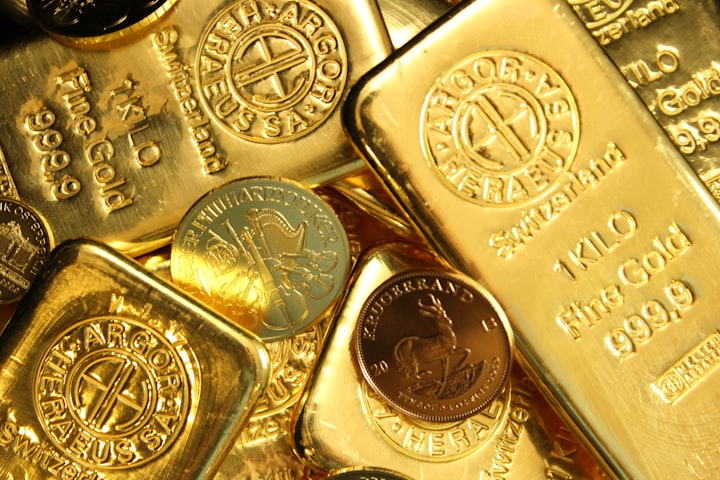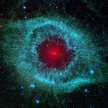What Element Has Atomic Number 79?
The answer is gold. All chemical elements contain atoms with the same atomic number.

British spelling.
I write easy-to-understand stories regarding the universe and life, here are two of them. Enjoy.
<><><>
1/2
Every atom has an atomic number, referring to the number of protons in its nucleus (Its centre).
The lightest element, hydrogen, has an atomic number of 1, iron has an atomic number of 26, and gold has an atomic number of 79.
Lead has 82 protons in its nucleus, therefore atomic number 82, and so on.
Every chemical element is made up of atoms with the same atomic number. The more protons and neutrons an atom contains increases its weight.
Gold is a chemical element that we recognise by its yellow colour. It has a high value because of its rarity, resistance to corrosion, electrical conductivity, and, among many other things, its beauty.
The first solid evidence of humans interacting with gold was roughly 3,000 years before Christ. It was important for the ancient Egyptians as a status of wealth.
We have all heard of a gold rush when people would go to a certain place and mine for gold or pan for flakes of gold in rivers or streams.
We have to go back in time - billions of years - to understand the true origin of gold.
Stars produce heavier atoms in their cores through a process called nuclear fusion. It starts by fusing two hydrogen atoms to produce one helium atom, over time, stars will manufacture other heavier elements.
Larger stars can continue this process up to iron, but that will be the end of the road for heavier element production in stars.
Elements heavier than iron are formed in supernovae and neutron star explosions. When large stars die, their end will not pass peacefully; they end with massive explosions called supernovae that create the right conditions for manufacturing heavier elements, including gold.
At the time of a supernova explosion, massive amounts of elements are blasted far out into space; eventually, they will become part of other stars, planets, moons, or other celestial objects that are spread throughout the universe.

Supernova remnant, Image credit: NASA/CXC/SAO
All the gold that has ever been found or mined by man is estimated to be 187,000 metric tons.
Imagine a cube holding that amount of gold; its sides would be roughly 21 metres across.
Yes, that volume of gold is minuscule when you look at the size of our planet.
The proportion of gold in the Earth's crust is estimated to be just 4 parts per billion.
The early Earth did not have a solid surface like what we see today; over 4 billion years ago, it was just a molten ball. During that time, heavy metals, including gold, sank towards its core, but the early asteroid bombardment stirred the deeper layers of our planet and forced some gold into the mantle and crust.

Image credit: Thomas Breher from Pixabay.
Little or no gold would have been found without that heavy asteroid bombardment. It is unknown how much gold lies deep within our planet, but it is thought to be much more than what lies in the Earth's crust.
Now that you have a better idea of how ancient a history gold has, it might make your gold jewellery that little bit more special, but having said that all the elements on Earth have a very long history, especially hydrogen and helium, they are not much younger than the universe itself, which is thought to be 13.8 billion years old.
<><><>
2/2
Is water the most important liquid on Earth?

Image credit: Pietro De Grandi on Unsplash
Oil is another liquid that comes to mind; it has been the lifeblood of industrial nations and the world's most important energy source for over 60 years.
But the most abundant and important liquid on our planet is H2O; without water, our world would be void of life.
Water is a transparent, tasteless liquid that has no smell. A water molecule consists of two hydrogen atoms and one oxygen atom. Water will freeze at 32° Fahrenheit or 0°Celsius and boil at 212° Fahrenheit or 100° Celsius.
We are so lucky that our world is orbiting the Sun at the perfect distance; too close to the Sun and the water would boil away; and too far away, all the water in our oceans and lakes would be frozen solid.
That magical area where the Earth orbits the Sun is called the habitable zone or Goldilocks zone, which means that water can be in three common states: solid, liquid, and gas, perfect for the existence of life as we know it.

Image credit: Timo Volz on Unsplash.
Surprisingly, an average adult human body contains around 60% water.
Life flourishes in the most extreme places on our planet,
The total amount of water in the oceans, seas, lakes, ice caps, and atmosphere is calculated at 1,386 million cubic kilometres; that volume also includes the water in the Earth's crust.
Over 96% is saltwater, and the small amount leftover is fresh water found in lakes, rivers, and the atmosphere.
One cubic kilometre of water contains one trillion litres. We see flooding due to heavy rainfall in many parts of the world, which is not surprising when you realise that at any one time, the Earth's atmosphere could hold up to 13 thousand cubic kilometres of water.
Just over 70% of the Earth's surface is covered with water; the deepest part of any ocean is the Mariana Trench, which is almost 11 kilometres or 6.8 miles at its deepest point.

Image credit: Aaron Huber on Unsplash.
It is just as well that the surface of the Earth has deep oceans and high mountains; if our planet were a smooth sphere, then there would be no dry land, and the depth of the water all around the globe would be roughly 2.7 kilometres. If that were reality, then we land-dwellers would have never existed.
It is now thought that water existed on or around the Earth as it formed 4.5 billion years ago. Incoming comets and asteroids that bombarded our young planet may have contributed to the water we witness today.
The end.
<><><>
You may find my easy-to-understand stories about the universe and life interesting and educational.
If you subscribe to me for free, you will see my latest stories. Regards.
About the Creator
A B Forbes
Someone with a lifelong passion for that gargantuan area we call the universe. I also write stories about life itself. Enjoy






Comments
There are no comments for this story
Be the first to respond and start the conversation.